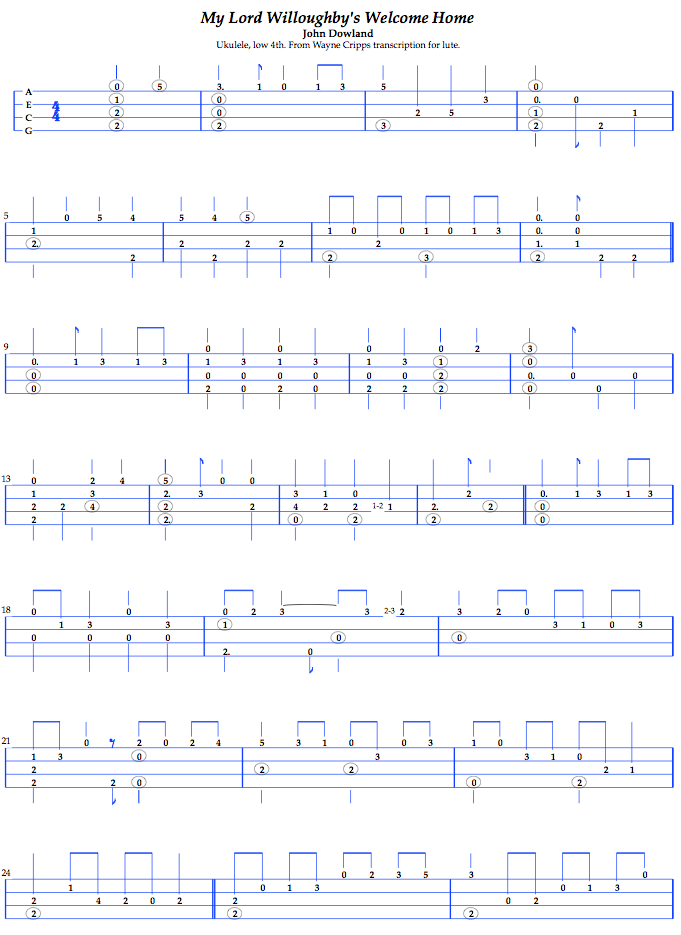

I would like to request that the ability to write in tablature be included in a future version of MuseScore. Of course there are several forms of this from renaissance lute tablature to modern guitar and banjo tablature. Descargar Libro Mexico Y Sus Asesinos Seriales. As a lutenist, I would particularly appreciate being able to write in French renaissance lute tablature (used also in Britain) which, as you may know, used the alphabet rather than numbers to represent the frets although Italian lute tablature did use numbers. And German renaissance lute tablature used another system all together. Let me take this opportunity to thank the MuseScore team for this excellent open source programme. Program For Bisection Method In Fortran 95. The reference work for lute tablature is Diana Poulton's book 'A Tutor for the Renaissance Lute' I am not a professional music historian.
The following represents my understanding only. There is marvellous site at Dartmouth university run by Wayne Cripps which has lots of renaissance lute tablature archived in pdf files. It has lots of info about the lute. There is even a lute tablature typesetting programme created by Wayne Cripps available for download there which is available for use free of charge (but not for commercial use I believe).
Basic Intro to Renaissance Lute Tablature - Download as PDF File (.pdf), Text File (.txt) or read online. This is a basic introduction, for a thorough overview get Diana Poulton's book 'A Tutor for the Renaissance Lute.' I am not trying to be complete, nor am I trying to be 100% accurate! Tablature works by telling you what.
He may be able to assist a MuseScore developer. See The renaissance lute started out with 5 or 6 pairs of strings or 'courses' to begin with--much like a modern 12 string guitar but they used gut strings. The first (highest pitched) 'course' was often not a pair but a single string. The bass strings often used octave pairs while the higher sounding treble strings were in unison. The dividing line between octaves and unisons appeared to move down with time.
Over time, extra bass courses were added that were often not stopped (fretted), but were there as drones. So for example my lute has seven courses.
As time went on, more bass courses were added until we get into the baroque period where enormous lutes were made with very long necks to accommodate the large number of extra drone bass courses. French tablature (used in Britain too) used the alphabet to show fret positions with the top line of the tablature representing the 1st (highest pitched) course. The lower case letter 'a' represented the unstopped string, 'b' the first fret, 'c' the second and so on. French tablature was the lingua franca of lute music.
Italian tablature used numbers to show the fret position rather like modern guitar tablature, but the 1st course (highest pitched) was written on the bottom line of the tablature not the top. Thus Italian tablature looks somewhat like modern guitar tablature but upside down. The number '0' represented the unstopped string, '1' the first fret, '2' the second fret and so on.
In Spain during the renaissance the vihuela, a 6 course guitar shaped instrument with the tuning of a lute, occupied the place of the lute. The Spanish vihuela players used the Italian tablature system with the important exception of famous vihuela player Luis Milan who inverted the Italian tablature so that the highest pitched course was represented by the top line of the tablature rather than bottom line--rather like modern guitar tablature. This webpage gives some images of the French and Italian tablature and also of Luis Milan's inverted vihuela tablature: German tablature was very different and is explained on the Wikipedia page linked above. See also this early music Google group (rec.music.early) for info on lute tablature in general--including a description of German tablature: It includes this rather entertaining description of the complexities of German tablature (I regret to say I have yet to get my head fully around it). 'TOTALLY different from any of the above. This tablature assigns a different letter to every fret on every string.
Start with a five string lute, label the open lowest string a, the next open string b. The open highest string e, the first fret on the lowest string f. The first fret on the highest string k, (j is again skipped).
When you run out of the alphabet, add two extra symbols called 'et' (sometimes sort of a backwards capital F, sometimes a sort of upside-down 2) and 'con' (sort of a 9). If you need to go to higher frets start the alphabet again with lines over, or use numbers if you prefer) Now add the sixth string by labelling it as you would in French tablature, but use capitals. Error Flash Driver Function Execute Timeout Program Download Failed on this page.